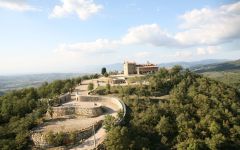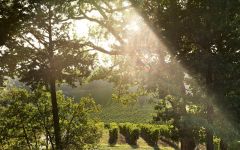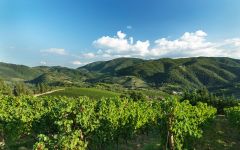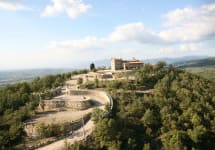Ruffino Chianti Classico Tenuta Santedame 2019
-
Wine
Spectator



Product Details
Your Rating
Somm Note
Winemaker Notes
An inviting Chianti Classico produced entirely in the homonymous estate in Castellina in Chianti, characterized by a fresh and fruity style, with a few months of barrel aging.
Blend: 80% Sangiovese, 20% Merlot
Professional Ratings
-
Wine Spectator
Rich and mouthfilling, featuring black cherry, blackberry, earth and spice aromas and flavors. Dusty tannins quickly chime in as this plays out on the long finish.
Other Vintages
2016-
Tasting
Panel -
Wilfred
Wong
-
Wine
Spectator
-
Wine
Enthusiast






In 1877, Illario and Leopoldo Ruffino laid the foundations of their dream to make the most known and loved Italian wines in the world from the heart of Tuscany. At their winery in Pontassieve, just outside of Florence, they began producing wines according to a strict quality standard and a rigorous technical research. Soon, Ruffino became an international symbol of the Chianti region, and won numerous awards, including the prestigious gold medal at the Bordeaux Wine Fair in 1895, affirming the quality of its wine.
In 1913, the Folonari family purchased Ruffino and brought new talent, energy and enthusiasm into the company. They started on a nearly century-long pursuit to develop a collection of estates in Tuscany, all of which matched the standard of quality and uniqueness which was the trademark of Ruffino wine.
Over the last sixty years, Ruffino has established seven prominent estates in Tuscany, all situated within the major DOCG production regions including Brunello di Montalcino, Vino Nobile di Montepulciano, Chianti and Chianti Classico. Today, Ruffino continues to meld century-long Tuscan traditions with new state-of-the-art cellar technology and modern winemaking for an ideal symbiosis with the energy of the contemporary Italian lifestyle.

Disenchanted with Italian winemaking laws in the 1970s, a few rebellious Tuscan winemakers decided to get creative. Instead of following tradition, to bottle Sangiovese by itself, they started blending it with international varieties, namely Cabernet Sauvignon, Merlot and Syrah in differing proportions and with amazing success. However, some Tuscan Blends don’t even include Sangiovese. Somm Secret—The suffix –aia in Italian modifies a word in much the same way –y acts in English. For example, a place with many stones (sassi) becomes Sassicaia. While not all Super Tuscan producer names end in –aia, they all share a certain coy nomenclature.

One of the first wine regions anywhere to be officially recognized and delimited, Chianti Classico is today what was originally defined simply as Chianti. Already identified by the early 18th century as a superior zone, the official name of Chianti was proclaimed upon the area surrounding the townships of Castellina, Radda and Gaiole, just north of Siena, by Cosimo III, Grand Duke of Tuscany in an official decree in 1716.
However, by the 1930s the Italian government had appended this historic zone with additonal land in order to capitalize on the Chianti name. It wasn’t until 1996 that Chianti Classico became autonomous once again when the government granted a separate DOCG (Denominazione di Origine Controllata e Garantita) to its borders. Ever since, Chianti Classico considers itself no longer a subzone of Chianti.
Many Classicos are today made of 100% Sangiovese but can include up to 20% of other approved varieties grown within the Classico borders. The best Classicos will have a bright acidity, supple tannins and be full-bodied with plenty of ripe fruit (plums, black cherry, blackberry). Also common among the best Classicos are expressive notes of cedar, dried herbs, fennel, balsamic or tobacco.
